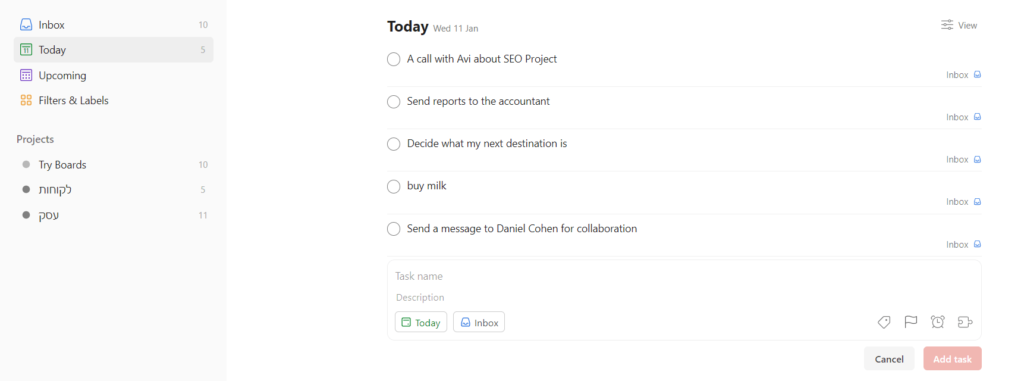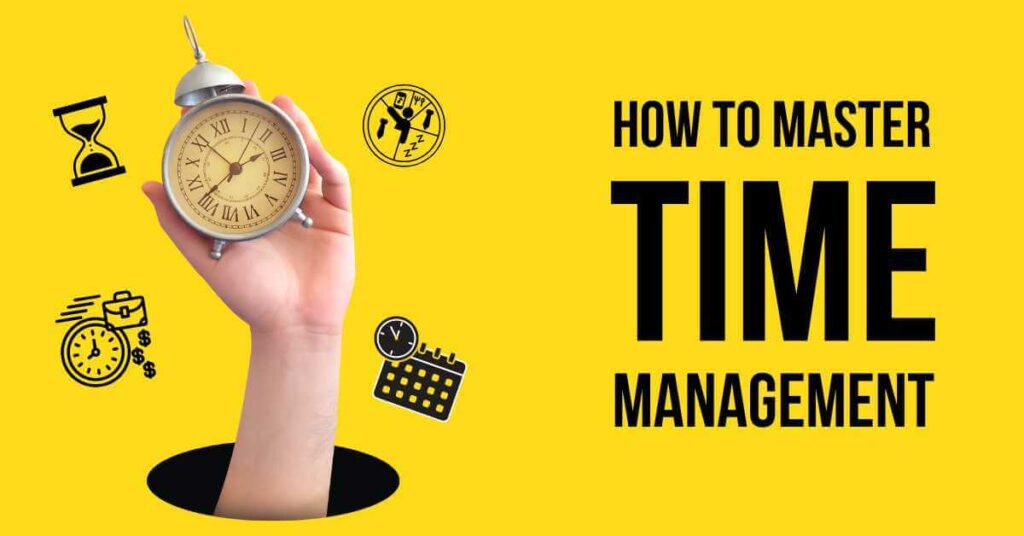Time management (or we can also call it “nomadic time management”). It’s a concept that even the most experienced digital nomads struggle with.
After all, managing your time while traveling can be tricky. You don’t have the same routine that you would at home, and your days can often be filled with long flights, layovers, and unpredictable weather.
Time management was a topic that I struggled with for a long time (I’m still not perfect at it), so I thought I would share some of the techniques that I’ve found to be the most successful and also some tips that I’ve learned from listening to podcasts, friends, and colleagues.
Table of Contents
ToggleFirst, why do You want to improve Your time management?
It is important to define why time management is important to you because having a clear understanding of your motivations and goals can help you stay focused and motivated when working on improving your time management skills.
When you can define your specific reasons for wanting to manage your time better, it will be easier for you to prioritize your tasks and activities and make decisions about how to allocate your time.
Additionally, you’ll be better equipped to set goals and measure your progress by understanding why time management is important to you.
For example, if your goal is to be able to take a certain number of trips per year, then tracking your time and seeing where you can make improvements to free up more time will be crucial in achieving that goal.
Furthermore, by understanding your motivations and goals, you’re more likely to be consistent and patient with yourself, with time management as an ongoing practice and not just a one-time thing.
Please, take 1-2 minutes to think about it and write down your reasons why you need to improve your time management.
Creating a daily schedule:
After you’ve determined your reasons for improving your time management (I hope you did it), the next step is to create a daily schedule.
Creating a daily schedule doesn’t necessarily have to be a rigid set of tasks you follow every day, but having some structure in place can help provide direction and ensure that you’re staying on track.
When creating a daily schedule, it’s important to remember that it should be flexible and tailored to you. There is no one-size-fits-all approach when it comes to time management, so don’t feel like you have to stick to a strict 9-5 schedule if it doesn’t work for you.
The key is to find what works best for you and your lifestyle. You might find that having a certain routine in place helps keep you focused and motivated, while others might prefer to go with the flow and adjust their daily schedule based on where they are (or what’s going on).
How I create my own daily schedule
I like to start my day with a To-Do list. I make a To-Do List, prioritize it and then create my daily schedule accordingly.
That way, I can track my progress and make sure I’m focusing on what’s important and not wasting time on things that aren’t necessary.
Then, I’ll adjust my schedule as necessary throughout the day, depending on what tasks take longer or shorter than expected.
I also like to make sure I’m taking regular breaks and dedicating time to the activities I enjoy, like reading a book or going for a walk. That way, I don’t burn out and can stay productive throughout the day.

Golden tip:
Do You know that moment when you’re walking down the street and, out of nowhere, a task comes to your mind? Don’t let it slip away, write it down! Even if you don’t need to do that task right now, jot it down.
This is why I also recommend you to set one source on your phone or a small book – for writing those tasks down, and then you can add them to your To-Do list when needed.
Managing distractions:
OMG! We all know how difficult it is to stay focused and avoid distractions these days.
Social media, emails, text messages, phone calls – they can all be so tempting when you’re trying to work on something important.
That’s why it’s essential to develop strategies for managing distractions. One of the most effective methods is setting specific times for checking emails, text messages, or social media accounts.
For instance, instead of checking your emails every few minutes throughout the day, set specific times to do so – like at the start and end of the day or an hour in the middle of the day. This will help you stay focused without missing out on important messages.
You can also turn off notifications to prevent yourself from getting distracted when a message comes in.
Finally, try to stay away from your phone and other devices as much as possible during work hours. It will help you stay focused and make the most of your time available for productive tasks.
Golden TIP:
Every phone today has the option to turn on the “Do not disturb” mode, so you can use it to keep your device silent and prevent distracting notifications during work hours.
Learn to say “no” when necessary
Yes! It also means saying NO to the girl you met on Tinder or to Your FOMO (fear of missing out) when your friends from the hostel invite you to a party.
If you decide to stay productive, then make sure you stick to your plan. Of course, some exceptions are acceptable, but it’s essential to stay focused and not get distracted.

Staying organized:
Staying organized is one of the most important aspects of time management when working remotely.
An organized workspace and workflow can help You maximize productivity, stay focused, and achieve goals.
Being organized means having a system that allows you to locate documents and information quickly when needed. It also helps you prioritize tasks, set deadlines, and keep track of progress.
Prioritizing self-care:
Last but certainly not least, don’t forget about self-care! Taking regular breaks and dedicating time to yourself can help you stay focused and productive.
Set aside sometime each day for activities that energize you, like going for a walk or reading a book. This will help keep your mind relaxed and recharged to be more productive.
Also, make sure to get enough rest and stay hydrated throughout the day. Prioritizing self-care will help you maintain energy levels and focus on important tasks.
Time management techniques for digital nomads
I did some research on which time management techniques work best for digital nomads and remote workers.
Note: Choose one technique! It’s important to stick with one technique so you can familiarize yourself with it and make sure it works for you.
The Pomodoro Technique – The best one
I’ll start with the technique I use most: The Pomodoro Technique. This technique encourages you to break down your tasks into small, manageable chunks and focus on one task at a time for 25 minutes.
At the end of each 25 minutes (called “Pomodoro”), take a 5-10 minute break before starting the next Pomodoro. This technique helps you stay focused and productive throughout the day without burning out.
But that’s not all. Let me introduce you to LO-FI music, which is perfect for working in the background while using this technique.
LO-FI Music:
LO-FI music or “low fidelity” music is a type of chilled-out instrumental music that is ideal for creating a relaxed atmosphere and improving focus. It’s great to listen when you need to concentrate on a task and block distractions.
The Pomodoro Technique with LO-FI music is a winning combination for digital nomads and remote workers who want to maximize productivity while reducing stress.
Check out this article to learn more about how LO-FI music can help with productivity and focus.
Time blocking
The concept of time blocking is simple: block off chunks of your day to complete specific tasks.
For example, you could set aside one hour in the morning for writing an article and two hours in the afternoon for making phone calls.
Time blocking is great because it helps you stay focused and on track with your goals. Plus, it’s easy to plan ahead and adjust your schedule if needed.
The best part? You can customize your time blocks to fit your needs. For example, if you need to take a break from work every few hours, make sure that you build sufficient breaks into your schedule.
Eisenhower Matrix
Eisenhower Matrix helps you decide which tasks are urgent and important, which tasks are not urgent but important, which tasks are urgent but not important, and which tasks are neither urgent nor important. This matrix helps you effectively prioritize tasks and manage your time.
To use the Eisenhower Matrix, start by writing down each task you need to complete in a day. Then, categorize them into the four quadrants: urgent and important, not urgent but important, urgent but not important, and neither urgent nor important.
Once you have categorized all tasks, you can start working on the tasks in the urgent and important quadrants first. Then, move on to the not urgent but important quadrant, followed by the urgent but not important quadrant. Finally, work on any tasks that are neither urgent nor important.
Eat That Frog Technique
The Eat That Frog Technique is a time management technique that encourages you to tackle your most difficult tasks first.
It’s based on the idea that if you start with the hardest task, everything else afterward will be easier and faster.
To use this technique. First, write down all of your tasks for the day. Then prioritize them in order of difficulty. Start with the most difficult task, and then move on to the next one once you’ve completed it.
Finding the right technique for individual needs
It’s important to try out different techniques until you find the one that works best for your individual needs.
Different people have different preferences and styles of working, so there isn’t a one-size-fits-all solution when it comes to time management.
Experiment with different techniques and see which ones work best for you. It’s also important to remember that time management techniques are not meant to be rigid and inflexible, so don’t be afraid to adjust them as needed.
Conclusion:
Successful nomadic time management is all about finding the right balance between work and play. To help you get there, try out different time management techniques until you find one that works best for your individual needs.
From Pomodoro Technique to Eat That Frog Technique, time management can help You maximize productivity throughout the day without burnout.

- Improve your digital nomad skills
- Become a Digital Nomad
- To be my friend





